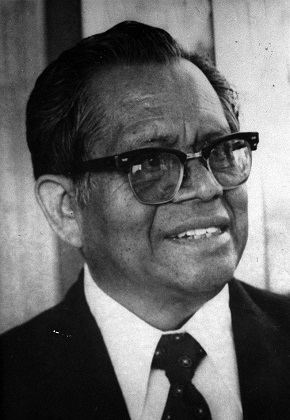Name Daniel Perez | Role Composer | |
 | ||
Died June 20, 1975, Xalapa, Mexico | ||
Yaax u h 1954 daniel ayala p rez
Daniel Ayala Pérez (21 July 1906 – 20 June 1975) was a Mexican violinist, conductor, and composer.
Contents
- Yaax u h 1954 daniel ayala p rez
- el grillo de daniel ayala p rez
- Biography
- Compositions
- Ballets
- Orchestra
- Vocal
- Piano
- Chamber music
- References
el grillo de daniel ayala p rez
Biography
Ayala was born in Abalá, Yucatán, and studied violin with Revueltas and composition with Chávez, Manuel M. Ponce, Vicente T. Mendoza, Candelario Huízar and Julián Carrillo at the Conservatorio Nacional de Música, Mexico City from 1927 to 1932. For a time he earned his living playing in the night club Salón México, a locale later celebrated in a well-known composition by Aaron Copland. In 1934 he formed, together with fellow composers Salvador Contreras, Blas Galindo and José Pablo Moncayo, the "Group of Four". From 1931 he was a second violinist in the Orquesta Sinfónica de México under Chávez, and directed a choir in Morelia for two years, but in 1940 returned to his native Yucatán to accept an appointment as conductor of the Police Band in Mérida. In 1942 he founded the Orquesta Típica Yukalpetén, which performs compositions by Yucatecan composers of the past and present (Slonimsky 1945, 226–27).
In 1944 he became conductor of the newly reorganized Mérida Symphony Orchestra and director of the Yucatán Conservatory. In 1955 he moved to Veracruz to take up the directorship of the school of music there, and also worked for the Veracruz Institute of Fine Arts (Stevenson 2001).
He died in 1975 in Xalapa, Veracruz.
Compositions
As a composer, Ayala's first major success was with a symphonic poem, Uchben X'coholte (1933), whose title means "In an Ancient Cemetery" in the Mayan language. His most ambitious work is the ballet El Hombre Maya (The Mayan Man), but the symphonic poem Tribu (1934) is perhaps his best-known work, thanks to a recording made in 1956 by the Orquesta Sinfónica Nacional under Luís Herrera de la Fuente (Musart 3-LP set MCDC 3033, included on the single disc Viva México! released in the USA on Capitol T-10083). After 1944 his conducting and administrative duties occupied more and more of his time, and he composed comparatively little.
